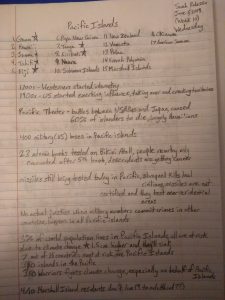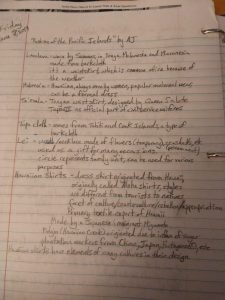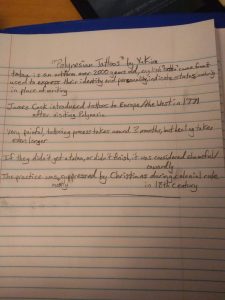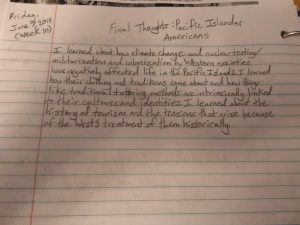Superheroes have become an increasingly popular part of mainstream culture in recent years, a phenomenon helped along by the nearly constant stream of superhero movies that began in the 2000s. From the X-Men movies with Patrick Stewart as Professor Charles Xavier and Hugh Jackman as Wolverine, to Tobey Maguire as Peter Parker in the Spider-Man trilogy, these movies did a lot to help popularize superhero movies as a part of mainstream culture. There had been other superhero movies before this, of course, such as various Batman movies over the years, but they were more spread out. Flops such as Batman and Robin became laughingstocks, as it was considered too campy and not nearly realistic enough to satisfy an audience that had come to expect grit and darkness from Batman, a far cry from the days of Adam West’s rendition of the “Caped Crusader.” DC’s superhero movies have improved in quality and diversity over the years, expanding from Batman and the Green Lantern to other heroes such as Wonder Woman and Aquaman, whose titular characters were both played by people of color. But Marvel has outpaced DC in sheer popularity, with their steady stream of box office hits infusing the public consciousness with a superhero frenzy. The Marvel Cinematic Universe, or MCU as it’s known by fans, began in 2008 with the first Iron Man movie, and continues in the present day with Avengers: Endgame which was released earlier this year. With the charismatic Robert Downey Jr. as Tony Stark, Iron Man sparked a wave of superhero movies the likes of which had never been seen before. The MCU was probably the most ambitious movie series that had been attempted before, as each movie was part of a single cohesive universe, so the writers had to make sure that each movie built on the previous ones. This kind of worldbuilding had been previously confined to mediums such as comic books which, as the source material for the MCU, helped make it feel as though the movies were depicting the fans’ favorite comic book heroes come to life. This is part of what made the MCU’s popularity soar.
But superheroes have been around much longer than people think. In The Myth of The American Superhero by John Shelton Lawrence and Robert Jewett, they define a superhero as someone who is:
“…distinguished by disguised origins, pure motivations, a redemptive task, and extraordinary powers. He originates outside the community he is called to save, and in those exceptional instances when he resides therein, the superhero plays the role of the idealistic loner. His identity is secret, either by virtue of his unknown origins or his alter ego; his motivation is a selfless zeal for justice. By elaborate conventions of restraint, his desire for revenge is purified.” (Lawrence and Jewett 47)
This description should sound familiar to anyone who is even vaguely familiar with superhero media, as this kind of character is very common. From extremely popular heroes such as Spider-Man, Batman, and Superman to other heroes such as the X-Men, most aspects of this description are accurate to their stories. But Lawrence and Jewett are not talking about superheroes as we know them today. They are referring to an older version of the same archetype, found within another form of media that is distinctly American. Lawrence and Jewett argue that heroes from Westerns provide the base for superheroes as we know them today. “The frontier vigilante as protector of a defenseless civilization was given substance by actual conditions in the West. Rapidly expanding exploitation of western resources and the lack of an effective national police system provided an ideal seedbed for vigilante justice” (Lawrence and Jewett 30). Just as modern day superheroes take matters into their own hands to bring justice and protect the citizens of their territories, so too did characters like the Lone Ranger and the people in real life who were the inspiration for them.
However, Westerns were always very white-oriented, as the pioneers did not have much regard for other ethnicities. This attitude has unfortunately bled over into modern day interpretations of superheroes and still persists. In The Superhero Costume, Barbara Brownie and Danny Graydon discuss how whiteness has impacted consumer perceptions of how heroes should be. They state that “Commentators’ surprise at the decision to create an African American Spider-Man, in the form of Miles Morales, provides evidence that the superhero genre has previously equated American national identity to whiteness” (61). While Miles Morales went on to become a very popular Spider-Man, the initial backlash proved that perceptions of race have a huge impact on what characters are “allowed” to be like in the minds of audiences. Relationships between whites and African Americans, whites and Asian Americans, and whites and practically any other ethnicity has been fraught with racial tensions and violence and mistreatment on the parts of whites. Unfortunately, since the creators of the most popular comics have historically been white men, a bias towards white men is evident in large comic book companies such as Marvel and DC. Even heroes whose characters are intended to be relatable to all readers have historically been solely white, since those are the demographics that the creators belong to and therefore the only one they tend to think about.
This leads to a tendency to make non white characters seem somehow alien in comparison. Brownie and Graydon state that “Through the years, mainstream American superhero comics have struggled to distinguish ethnicity from otherness, insofar as characters of non-white ethnicity are often costumed to appear either exotic or primitive” (64). This is apparent in many characters that originated in comics, such as the stereotypical depictions of wise and elderly Asian monks in Doctor Strange and Iron Fist who are masters of magic and chi respectively. However, the clothing the sorcerers wear in Doctor Strange includes tunics and things that look visually similar to what people think of when they think of medieval Europe, which means that viewers could easily become confused and assume that the cultures are interchangeable or hold similar attitudes and values. Since people often think of medieval Europe as primitive and backwards, when they aren’t romanticizing it, this has the potential to unintentionally superimpose negative connotations onto Tibetan culture. This effect could have been mitigated by making more of an effort to include the culture or explain the clothing choices in the movie, but the filmmakers did not do either of those things. The outfits of the main characters also have little to no bearing on the actual culture they are supposedly from. “Though these features of costume appear to be markers of cultural authenticity, they are for Western audiences” (Brownie and Graydon 65). In Doctor Strange, the titular doctor’s signature cloak is undoubtedly fancy-looking, but the design doesn’t evoke strong feelings of belonging to a particular culture, let alone the Tibetan culture he receives it from. Since Doctor Strange’s clothes are meant to make him seem like a sorcerer, and therefore otherworldly and mystical, giving him a cloak that is associated with Tibet but doesn’t look like it has any cultural significance creates the implication that Tibet is an otherworldly, exotic place. Because of this, Tibet’s people are exoticized by extension and the influence of their culture is reduced to little more than a cloak that may or may not be of Tibetan origin, as it wasn’t ever stated in the movie.
The exoticising of other cultures is highly prevalent in American media, and superhero media especially is riddled with it. Part of this can be traced back to propaganda spread by the American military through comic books. With some heroes, it’s obvious that there’s an element of propaganda involved, such as when Captain America punches Hitler, a cover which has become iconic today and was even recreated in Captain America: The First Avenger.

But there are some heroes that people might not expect to see spouting military propaganda. Superman was created in 1938 by two Jewish men, Jerry Siegel and Joe Shuster. Knowing this, it might be shocking to find that in March of 1943, during the height of World War II, they released a comic with a cover emblazoned with the words “YOU can slap a Jap with WAR BONDS and STAMPS!” These kinds of overt military propaganda were spread because of the Writer’s War Board, and they used comic books and superheroes to further their political agendas, which mainly involved spreading racist propaganda against the Japanese and Germans during World War II (Hirsch 449). While racist attitudes towards Germans eventually dissipated, racism towards Asians unfortunately persisted much longer. Comic books continued to create racist depictions of Asians for decades, and all of them were practically interchangeable yellow-skinned caricatures.
The American military still uses superheroes to further its own agendas, but they have expanded towards Hollywood, supporting many productions that feature any depictions of the military. This “support” includes includes money and resources, but often requires filmmakers to depict the US military in a more favorable light. In an article discussing how Captain Marvel was military propaganda, Ben Norton mentions that the Pentagon has even prevented movies from being made if they were too critical of the US military (Norton, The Grayzone). This means that Hollywood movies been both subtly and overtly pushing whatever propaganda the military wants us to believe for at least the past few decades.
But the propaganda isn’t limited to Captain Marvel. According to an article written by Tom Secker and Matthew Alford, almost 2,000 movies have been revealed to have been influenced by the government and forced to conform to their standards regarding depictions of the US military (Secker, Medium.com). This censorship has affected a wide variety of movies, including other Marvel movies such as the Hulk and Iron Man movies, both of which feature the military prominently. While the military doesn’t appear to be shown very favorably in either of these movies at first glance, due to the zealous actions of General Ross and Emil Blonsky in Hulk and the seeming incompetence of the army and government officials in the Iron Man series, military values can be found in each film. The Iron Man series especially seems riddled with negative attitudes towards the Middle East and China, albeit indirectly for the latter.
The first Iron Man movie was released in 2008 and had a significant portion of it set in Afghanistan, where Tony Stark is captured and tortured by a terrorist organization by the name of the Ten Rings. While not stated outright, anyone who is familiar with the comics knows that this is a reference to the Mandarin, who is one of Iron Man’s villains and wears ten rings which give him various mystical powers. While it is often expected that Hollywood will change things in adaptations, this was a fairly large change for them to make, especially since the Mandarin isn’t even mentioned until Iron Man 3. Perhaps the biggest issue with this, however, is associating the Ten Rings and the Mandarin with Afghanistan. Not only does this perpetuate the stereotypes against people of South Asian descent that has persisted in America since the September 11 terrorist attacks, it also changes the character of the Mandarin drastically. As you might have guessed from the name, the Mandarin is meant to be Chinese and in the comics was a mixed-race descendant of Genghis Khan. Marvel Studios did seem to take this aspect of the character into account when they cast Ben Kingsley as the fake Mandarin in Iron Man 3, as Ben Kingsley is of Indian and English descent. However, the character of the Mandarin and the way he is presented gets more complicated the more you look at it.
The first glimpses of Ben Kingsley’s character we receive are in Iron Man 3, when “The Mandarin” hijacks television broadcasts to spread what he refers to as “lessons”. These broadcasts were always preceded by what the public thought were terrorist attacks.
These “lessons” consisted of “the Mandarin” giving a monologue accompanied by disturbing images and footage of warzones in what appears to be the Middle East as well as what appears to be Chinese decorations in his “lair.” His monologue consists of overtly anti-American sentiments and comparing his terrorist attacks to the genocide that white settlers inflicted on Native Americans, which brings to mind the “Yellow Peril”, racist attitudes that arose when white people began to fear Asians as being a threat to white society and the Western world.
It isn’t revealed until near the end of the movie that it’s all fake, and the character of the Mandarin was created by Aldritch Killian to cover up the accidental explosions caused by his Extremis drug, which gave people regenerative and heat-based powers, but came with the risk of overheating and blowing up.
This reveal, while surprising and treated like an interesting twist by most audiences of the time, comes with its own problems. Ben Kingsley’s character, whose name is revealed to be Trevor Slattery, becomes a bumbling, incompetent has-been who spends his entire screen time drunk, while the rest of the characters are all white and not treated by the narrative as something to look down on. The other villains of the movie, who are white or at least white-passing, all knew exactly what they were getting into when they chose to get involved with AIM, Aldritch Killian’s “think tank” that created Extremis. That same think tank created the “custom-made terror threat” of the Mandarin, then apparently manipulated Slattery with the promise of more drugs. This means that Killian, a white man, was capitalizing on racist attitudes by creating a caricature intended to echo the fears that have persisted in America since 9/11, all for his own personal gain. Not only that, but because Slattery was apparently given plastic surgery to look the part of the Mandarin, the character may or may not actually be Asian at all despite Ben Kingsley’s ethnicity, which only complicates the matter further.
Depictions of minorities in movies have often been complicated, and translations from comic books to the big screen are rarely perfect. However, some things create more backlash than others. There was a lot of fan backlash for the Doctor Strange movie in particular, as the character of the Ancient One was played by Tilda Swinton despite being Tibetan in the original comics. There were rightfully many accusations of whitewashing the character, and the situation was confused further by their decision to make the character female instead of male. Eventually the directors responded to this backlash by claiming that the character in the movie was specifically written for Swinton, and the original version of the Ancient One was composed of too many racist stereotypes for them to want to include him, so Swinton’s role was meant to be an entirely new character (Desta, Vanity Fair). While it is good that they would attempt to avoid including racism where possible, there are a few problems with this response. Although the Ancient One was a racist stereotype, this method of addressing that is whitewashing the character no matter how they want to justify it. They removed an Asian character and replaced him with a white character that has the same name and the same role. Even if they intended it to be a legacy character as stated in the interview, it was never mentioned in the movie itself. Additionally, although they mention that the character was originally created out of racist stereotypes, they changed little about the circumstances of the rest of the movie. Doctor Strange was still a white American man who goes to Tibet and learns magic, and the Ancient One was still the one in charge. They did not avoid any of the negative connotations or unfortunate implications associated with this kind of narrative, so their decision to change the character to a “new”, white version left a bad taste in peoples’ mouths.
Fans’ dissatisfaction with media has a long history, whether in regards to comics or movies. This often leads them to create their own stories based off of what they refer to as the “canon”. Fans will often address themes and plot points that are either forgotten or ignored by the original creators, and will often include diversity where the source material doesn’t. In the Superhero Costume, Brownie and Graydon say that “…the whole superhero genre is a response to the immigrant experience, and the struggle to adapt to a new national identity.” (56) While Hollywood and comic books sometimes seem to have forgotten this aspect, it is often evident in fan works, which are able to address and analyze those kinds of experiences far more deeply than media that is often made more for an audience of white males than anyone else. This means that fans often turn to creating their own versions in order to get the satisfaction of seeing their own experiences played out with the characters and settings that become so popular. In “Everyone’s a Superhero: A Cultural Theory of ’Mary Sue’ Fan Fiction as Fair Use” by Chander and Sunder, they explain that “From Hermione Granger-led stories, to Harry Potter in Kolkata, to Star Trek same-sex romances, Mary Sues re-imagine our cultural landscape, granting agency to those denied it in the popular mythology” (597). Fanfiction allows the average person to experience the original works in whatever way they choose to. This often includes things such as making characters different ethnicities because they feel those ethnicities better fit or inform the experiences those characters go through. This also means that minorities have a chance to share their own voices and experiences, and be included in those fan communities in a different way than just passively and uncritically accepting hoards of white characters being thrust upon them.
Superheroes hold a special place in the public consciousness. Americans especially view them as paragons of virtue and justice, and think of them as the ideal people that everyone should strive to be like. This creates problems when those characters are being shaped by leftover colonial attitudes from when whites were first settling the American West as well as present day military values, which are increasingly xenophobic against Asians and other minority ethnic groups. There have been an increasing number of superheroes of Asian descent in comic books, such as Kamala Khan, a Muslim character who in recent years became Ms. Marvel, but in the movies there are still very few Asian or Asian American characters, Jason Momoa’s Aquaman being one of the few examples. An overwhelming number of superheroes are white men and almost exclusively solve their problems with punching each other and blowing things up. In Myth of the American Superhero, Lawrence and Jewett say that
“Whereas popular myths might be expected to sustain the leading ideals and institutions of a culture, the American monomyth consistently undermines the democratic ethos. Given its elitism, irrationalism, zealous stereotyping, and appetite for total solutions instead of compromise, it is difficult to find any democratic emphasis in the myth, except perhaps in its convention of the ordinary person who develops extraordinary powers” (338).
Narratives reflecting racist attitudes are still being perpetuated in Hollywood which, combined with the revelation that movies are being influenced by the military and government, seems to indicate that the military is deliberately pushing narratives that erase or undermine Asian culture and leave Asian Americans with little to no role models to call their own. This lack of proper representation is both damaging and demeaning, as it is often forcing Asian American youths who consume this media to only be able to look up to white men as the “ideal” person, which creates an unattainable ideal that can cause serious self-esteem problems. Hopefully as time marches on we will begin to see narratives that represent Asian and Asian American characters fairly, and more Asian and Asian American heroes will have their chances to shine.
Works Cited
Chander, Anupam, and Madhavi Sunder. “Everyone’s a Superhero: A Cultural Theory of ‘Mary Sue’ Fan Fiction as Fair Use.” California Law Review, vol. 95, no. 2, 2007, pp. 597–626. JSTOR, www.jstor.org/stable/20439103.
Hirsch, Paul. “‘This Is Our Enemy’: The Writers’ War Board and Representations of Race in Comic Books, 1942–1945.” Pacific Historical Review, vol. 83, no. 3, 2014, pp. 448–486. JSTOR, www.jstor.org/stable/10.1525/phr.2014.83.3.448.
Norton, Ben. “Hollywood’s ‘Captain Marvel’ Blockbuster Is Blatant US Military Propaganda.” The Grayzone, 25 Mar. 2019, https://thegrayzone.com/2019/03/12/hollywood-captain-marvel-movie-us-military-propaganda/.
Secker, Tom. “EXCLUSIVE: Documents Expose How Hollywood Promotes War on Behalf of the Pentagon, CIA and NSA.” Medium, INSURGE Intelligence, 4 July 2017, https://medium.com/insurge-intelligence/exclusive-documents-expose-direct-us-military-intelligence-influence-on-1-800-movies-and-tv-shows-36433107c307.
Desta, Yohana. “Doctor Strange Director Explains Why the Ancient One Was Never Going to Be Asian in the Movie.” Vanity Fair, Vanity Fair, 13 Oct. 2016, www.vanityfair.com/hollywood/2016/10/doctor-strange-ancient-one-director?verso=true.
Lawrence, John Shelton, and Robert Jewett. The Myth of the American Superhero. W.B. Eerdmans, 2002.
Brownie, Barbara, and Danny Graydon. The Superhero Costume: Identity and Disguise in Fact and Fiction. Bloomsbury Academic, An Imprint of Bloomsbury Publishing Plc, 2016.
Favreau, Jon, director. Iron Man. Marvel Studios, 2008.
Black, Shane, director. Iron Man 3. Marvel Studios, 2013.
Derrickson, Scott, director. Doctor Strange. Marvel Studios, 2016.



